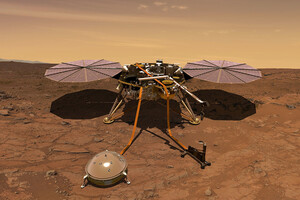The station is likely to be operational by January 2023.

Good weather on Mars will allow the camera NASA InSight's life is a little longer than expected. The station is likely to last until January of next year, according to Space.com.
InSight's solar panels have become covered in dust, causing them to generate only a tenth of the energy they did when the rover first arrived on Mars. Scientists expected the station to be fully discharged by the end of the summer, but it is still receiving scientific data and will probably last for several more months.
Also read: NASA's apparatus recorded tremors from falling meteorites on Mars
But as stated by Chuck Scott, the head of the InSight mission at NASA's Jet Propulsion Laboratory, if a dust storm occurs on the Red Planet, the station may fail even earlier. Her batteries are so low that any form of weather on Mars could lead to complete exhaustion.
How much power InSight can generate depends on two factors: the amount of dust on the solar panels and the amount of dust in the Martian atmosphere. During a dust storm, both of these factors can become a problem.
Martian dust is not just a problem for InSight. Yes, the Mars rovers Perseverance and Curiosity use nuclear power, but their predecessors, the “twins” Spirit and Opportunity, had to fight with the accumulation of dust on the panels, a dust storm “killed” the latter.
But Spirit and Opportunity showed that dust storms also have the opposite effect. Strong winds can blow dust off the panels. But InSight was unlucky, all attempts to clean the dust from the panels failed.
In June 2021, the mission team estimated that InSight would run out of energy this spring. In May, scientists came to the conclusion that the device will be able to work until the end of summer and included a program of priority supply of energy to the seismometer. In addition, the mission team disabled the transition to safe mode, meaning InSight will continue to operate as long as it is physically possible.
And the spacecraft is still working. It is now entering a time of year when Mars sees an increase in dust storms. However, this year's season has gotten off to a milder start than usual, making it likely that InSight will be able to continue its mission.
When the rover first landed on Mars, it could generate 5,000 watt-hours per sol ( lasts 40 minutes longer than a day on Earth). It currently produces less than 400 watt-hours of energy per day, the minimum it needs to operate is 300 watt-hours.
Related video
At some point, InSight will not be able to generate even that amount. Then he will no longer be able to support his work and will die.




